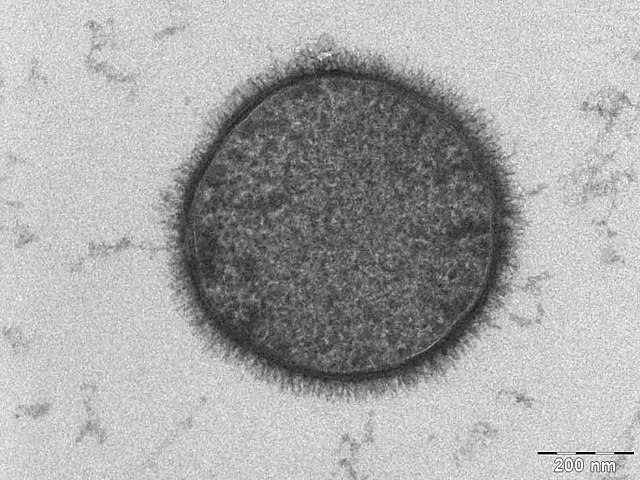Moeller_stain
Moeller staining involves the use of a steamed dye reagent in order to increase the stainability of endospores. Carbol fuchsin is the primary stain used in this method. Endospores are stained red, while the counterstain methylene blue stains the vegetative bacteria blue.
This article needs additional citations for verification. (December 2010) |

Endospores are surrounded by a highly resistant spore coat, which is highly resistant to excessive heat, freezing, desiccation, as well as chemical agents. More importantly, for identification, spores are resistant to commonly employed staining techniques; therefore alternative staining methods are required.